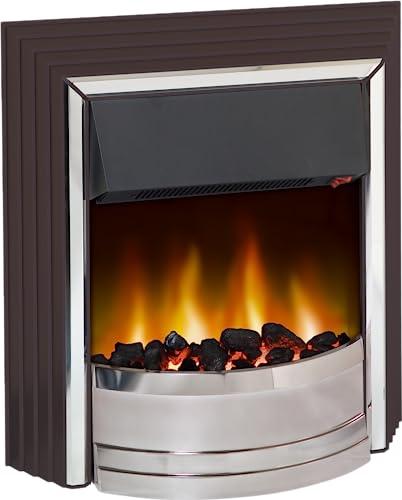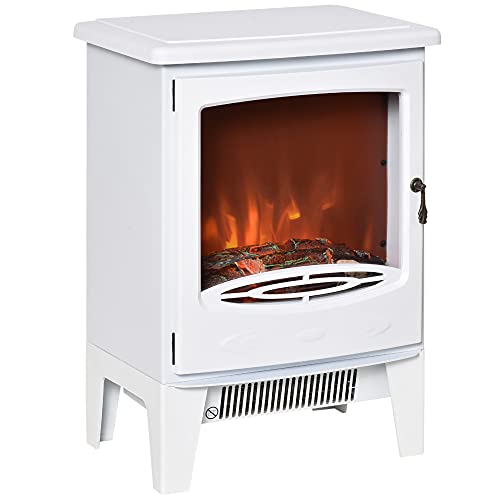The Benefits of an Ethanol Fireplace

Ethanol fireplaces are a fantastic alternative to wood or gas fires, as they do not require a chimney or flue. They also don't produce any smoke, ash or mess and are easily moved between homes.

Use bio-ethanol only on burners specifically designed to burn the fuel. Other gels and liquid fuels may void your burner's warranty.
Cost
The cost of a bioethanol fire place varies in accordance with the kind and design you pick. There are models ranging priced from a few hundred bucks to a few thousand dollars, however, they are generally less expensive than a gas or wood fireplace. Some are designed to be freestanding, whereas others can be recessed into the wall or attached to a chimney. Ethanol fireplaces are also less polluting to the environment than wood-burning fireplaces.
Bioethanol fires are popular due to their natural, beautiful flame that is free of any smoke or soot. They can be used in nearly any space, and are easy to maintain. However, you should only use bio ethanol fuel specifically designed for use in these fireplaces. Other kinds of fuel can harm the burner, which increases the risk of fire. Additionally, you should not keep flammable substances near the
bioethanol fire.
Ethanol fireplaces are excellent to heat rooms, but they shouldn't be used as your primary source of heat. They are more efficient than wood-burning fireplace places and can generate lots of heat, around 2kW in average. This isn't enough to heat an entire house, but it can definitely warm up smaller rooms.
It is also necessary to consider the costs of maintaining an ethanol fireplace. The fireplace should be kept in a secure location away from children and pets. Follow the manufacturer's guidelines when adding fuel, then extinguishing the flame and let the heater cool.
A
fireplace insert that is ethanol-based is a great alternative to a stove that burns wood. The main advantage of this kind of fire is that it does not require a chimney, which means you can save money on the installation and maintenance costs. Furthermore, it is more secure to use than other fireplaces. It is a good idea to speak to an expert before making a final decision. You can be sure that the fireplace will be properly and safely installed.
Environmental impact
A
fireplace that is ethanol-powered is an eco-friendly alternative to traditional fireplaces that burn wood. It makes use of bioethanol fuel which is created by the fermentation process of sugar and starch components from waste plant products such as corn, straw and maize. The liquid biofuel then undergoes further distillation to let it burn cleanly and efficiently. This kind of fuel can be considered an energy source that is renewable and doesn't emit harmful odours or emissions. It's also free of soot and smoke. This makes it a safer choice for your home.
They can be positioned in any room in your home because they do not need venting or chimneys. The majority of models come with a remote control. Many of them also feature an inbuilt cooling system to stop the fuel from overheating. They can be used either as a primary source of heat or an additional heating unit. These are also good for people who live apartments or condos.
Bioethanol fireplaces produce little odours, making them a great choice for homes that have those who suffer from asthma or allergies. This type of fireplace is safe to use in a child's or nursery room. These fireplaces must be kept away from flammable items such as curtains or furniture.
One of the biggest benefits of an ethanol fireplace is its simple use. It is much simpler to set up than a fireplace that burns wood, and does not require any complicated electrical wiring or installations. The liquid fuel can also be stored in a container that is portable to allow it to be easily moved from one room to another. This lets you enjoy the warmth of a
fireplace stove without having to deal with the mess of stacking, chopping, and cleaning up wood.
A bioethanol
white fireplace produces very little pollution. This makes it a great option for those who are concerned about the environment. In addition, these fireplaces are a great way to save energy and money.
Safety
A bioethanol fireplace is a secure alternative to an open fire. They burn cleanly and produce less smoke than other alternatives and are easy to use. However, as with all fireplaces and other appliances that produce fire they could be dangerous if used incorrectly. These fireplaces require particular care and attention, so it is important to read the instructions carefully and follow them strictly.
If you're using a bioethanol fireplace, be sure to place it in a room that is well-ventilated and away from any other combustible material. Also, keep children and pets away from the fireplace. Don't try to move it while it's still burning, as this can cause a fire.
Bioethanol fireplaces aren't as dangerous as wood or gas fireplaces, however there are some safety guidelines that must be adhered to in order to ensure safe operation. Keep flammable objects at least 1500mm from the burner and don't touch it while the flame is burning. It's also important to never fill a fire with fuel that's not approved.
The bio-ethanol fireplace's burning process is safe, as you follow the guidelines. In essence, the fuel is then pumped into a vapour accelerator, where it vaporizes, and then ignited by a filament. This method of combustion ensures that the fuel is fully combustion-free, which means it is free of smell and harmful substances like dioxins and furans.
Ethanol fireplaces are dangerous when not properly used and it is essential to follow the guidelines of the manufacturer when installing and operating them. They should be kept away from combustible material like newspapers and curtains. They should be kept at a safe distance from other appliances in the home and should not be placed close to sleeping animals or children.
The major benefit of a bio ethanol fireplace is that it doesn't produce any harmful fumes or odours and is a much safer option for families with children or pets. They are also more convenient to use than traditional fireplaces because they do not require a chimney and do no cause carbon monoxide poisoning. These fireplaces also come with a variety of advantages, including an adjustable installation space and the ability to move them around easily.
Installation
A bioethanol fireplace is an excellent way to add ambiance and warmth to your home. They are available in various designs and can be put in with a variety of ways. They can be wall-mounted, built-in, freestanding or see-through. You must always read the installation manual for a fireplace before installing it. This will allow you to avoid any issues during installation and ensure that your fireplace is safe to use.
The procedure of installing a bioethanol fireplace is fairly simple. It involves putting in the burner and building an enclosure to be inserted into the wall. The frame should be constructed with a material which is not fire-proof. This will stop the burner from igniting your wall. This also helps to prevent the flame spreading to other parts in the room. The frame should be secured to the wall using appropriate screws and dowels.
In contrast to other kinds of fireplaces ethanol fires do not require a chimney nor a flue. This makes them cost-effective for homeowners. Furthermore they can be utilized in any room of the house and can be easily moved from one location to another. Furthermore, they don't produce any harmful emissions.
When properly used, a bioethanol fireplace is very secure. As with any fire it is essential to keep them from children and other flammable surfaces. Additionally, the fuel must be kept in a safe place and the fire smothered prior to refueling it.
Ethanol fireplaces do not produce soot or ash They are also easy to clean. These fireplaces are an excellent option for those who are concerned about the effect on the environment that traditional wood-burning ones. Ethanol-fueled fireplaces are an excellent alternative to
electric fireplace or gas fireplaces.
While bioethanol fireplaces are an excellent addition to any home however, they shouldn't be used as a primary source of heat. They are designed to add warmth and create a cozy ambiance however they aren't sufficient to heat an entire home. The best method of installing a bioethanol fireplace is to hire an expert to handle the job.